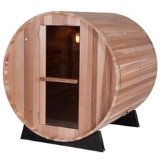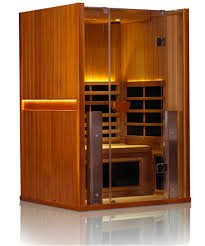Sauna vs. Steam Room – Understand the Difference
In the continuing sauna vs. steam room debate, it’s helpful to fully understand the difference between the two and what they can do for you:
A steam room is a high humidity chamber that heats water to create vapor. (See Steam Shower Sauna).
A sauna is a low humidity chamber that uses hot rocks (or even infrared rays) to create a high, dry heat. (see Finnish and Infrared Saunas).
If you use one or both of these hot rooms at the health club, you may have developed a personal preference for one versus the other. Some people use either the sauna or the steam room as a treat - a session of relaxation after their workout. That approach is fine but you should know that these heat therapies offer so much more!
Key Differences: Sauna vs. Steam Room
- Steam Room: Uses a generator to boil water and release vapor, creating 100% humidity at a lower temperature (usually 110–120°F / 43–49°C). The air is moist, enveloping, and can feel intense even at lower temperatures.
- Sauna: Typically features hot rocks or infrared panels to generate high, dry heat. Traditional saunas can reach 160–200°F (70–95°C), with humidity ranging from 5–30%. Some saunas are “wet” by pouring water over rocks, creating temporary steam.
Both environments raise your body temperature, stimulating circulation, sweating, and thermoregulation. However, how your body responds differs depending on heat type, humidity, and exposure duration.
Feature
Humidity
Temp Range
Heating Method
Heat Transfer
Heat Loss/Cooling Efficiency
Sensory Experience
Steam Room
100% vapor/Moist air
Lower (110-130 F)
Steam Generator
Convection/Latent Heat
Evaporation limited, skin cooling less effective
Damp, enveloping, thick
Sauna
Very low himidiy
Higher (160-200 F)
Hot rocks/heater/IR
Conduction/Convection/Infrared
Sweat evaporates easily, more effective heat dissiplation
Dry, crisp and bursts of steam when wet
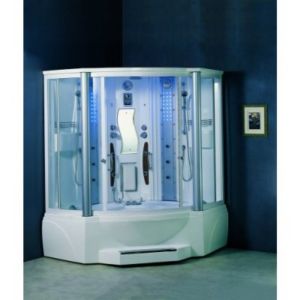
For one, a steam room does more than just open the pores and ease breathing. First of all, just like a sauna, it makes you sweat which is a necessary function of the skin.
Sweat contains urea, the same stuff in urine, so it’s beneficial for the body to sweat out toxins and other impurities. The steam room uses a generator to heat water and disperse it in the air creating 100% humidity but at a much lower temperature than a hot rock sauna.
Compare Prices of Popular Saunas at Amazon
Dry and Wet Saunas
One confusing problem in the sauna vs. steam room debate is that saunas are often described as being dry or wet. In a hot rock sauna, the result is high temperature (up to 200° F) and low humidity (about 10%). In a “dry” sauna, the high heat is well-tolerated by the body because perspiration evaporates quickly without humidity present.
In a “wet” sauna, water is poured on the hot rocks and the vapor raises the humidity of the room up to 20%. You can also add aromatic fragrances to the water you apply to the rocks adding yet another benefit of the “wet” sauna.
Sauna Temperature Comparison Chart
Health Benefits & Mechanisms
Thermoregulatory & Cardiovascular Effects
- Both sauna and steam exposure elevate core body temperature, which triggers adaptations: increased heart rate, peripheral vasodilation, and enhanced blood flow.
- Over time, repeated heat exposure can improve heat tolerance, cardiovascular resilience, and vascular function.
- Studies show sauna use is associated with lower incidence of hypertension, cardiovascular disease, and improved endothelial function (depending on frequency, duration, and safety).
Skin & Detoxification
- Sweating under heat can aid in skin cleansing — pores open, and sweat helps flush superficial impurities.
- However, “detoxification” claims must be tempered: major toxin clearance is performed by the liver and kidneys, not sweat glands.
- Humid steam rooms may also help hydrate skin and support moisture retention, whereas dry saunas may cause greater water loss, so rehydration is crucial.
Respiratory & Mucous Membrane Effects
- Steam rooms provide high humidity which can soothe irritated airways, loosen mucus, and be beneficial for individuals with sinusitis, bronchitis, asthma, or dry nasal passages.
- Saunas’ dry heat doesn’t deliver the same humid benefits, but can improve breathing indirectly through enhanced circulation and relaxation.
Musculoskeletal & Recovery
- Heat improves muscle pliability, reduces stiffness, and can assist in post-exercise recovery when used after workouts.
- The elevated blood flow helps repair microdamage, flush metabolic byproducts, and reduce soreness.
Safety, Contraindications & Best Practices
Practical Tips & Usage Guidelines
Which One is Right for You?
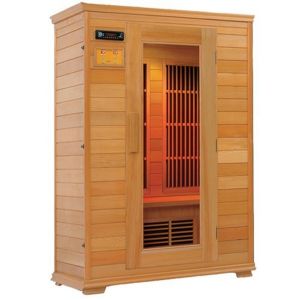
Both the steam room and the sauna create the desired effect of creating a temporary fever, or rise in temperature in the body, a process called hyperthermia. Both serve the needs of different groups and it’s important to learn them in your sauna vs. steam room decision.
If you have respiratory problems and allergies then the steam room is generally the better choice versus the sauna since the moist air will help to clear sinuses and airways. The steam inhalation is also effective on sinusitis, bronchitis, asthma, even coughing, or any malady which can be relieved by moisture in the air.
How the Body Dissipates Heat
Even though the temperature is hotter, the body is better able to effectively dissipate its body heat in a sauna vs. steam room environment, because the sweat will evaporate in the hot dry air of the sauna. The body cannot cool itself as effectively in a steam room because there is no evaporation of the water vapor.
To get a better idea of this, imagine being submerged in a Jacuzzi or a hot bath, where heat loss through evaporation is impossible due to total water saturation. That’s why a hot bath of 100° F feels much hotter on the skin than a sauna with a temp of 180° F.
Consult Your Physician
The sauna is generally preferred over a steam room for those who can’t tolerate hot humid environments which would include people who suffer from acute rheumatoid arthritis, acute infection, or active tuberculosis. Furthermore, because of the increased cardiovascular activity, people suffering from heart ailments should talk to their doctor before using the steam room.
In the sauna vs. steam room debate, both get a “thumbs up” for aiding the overall health of the skin as well as improve respiratory and circulatory benefits for people that exercise, as well as those who don’t.
Infrared Saunas
Sauna Heaters
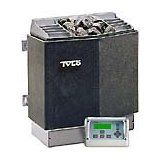
How to Install a Wood Sauna Heater
Sauna Kits

Buying Guide
